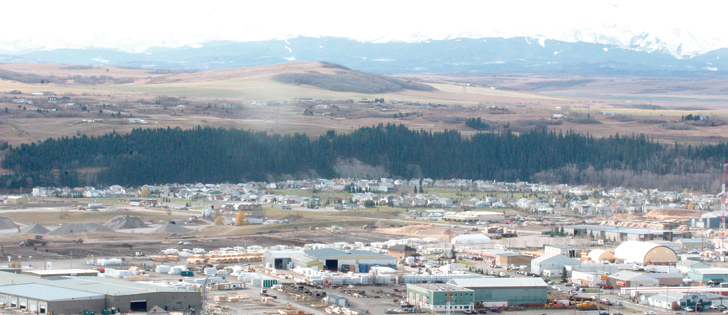The sector requires large amounts of land but where will food come from if that land is lost to development, asks land-use official
Alberta’s ability to produce food is in jeopardy as the competition grows for land and resources.
“You can’t find a geography of similar size anywhere in North America that is collectively producing the rate of commodities across the board that we are. It is a busy place,” said Brad Stelfox of the Alces Landscape Group, which studies land-use changes.
The group has found native grasslands are being lost and livestock is being pushed out to less productive areas. Operation Grassland Council sponsored the research. The council is part of the Alberta Fish and Game Association, which promotes conservation and habitat enhancement.
Read Also

Canadian Food Inspection Agency extends chronic wasting disease control program consultation deadline
Date extended for consultation period of changes to CWD program
Some of the results were presented at the Alberta Beef Producers annual meeting in Calgary late last year.
Stelfox tracks landscape changes over time and pointed out that when livestock arrived in the mid-19th century, it was the most important economic land use but was eventually overtaken by the oil and gas industries.
The beef sector adapted over time by selecting more productive animals as the landscape faced in-creased development pressures. Forestry, mining, cropland, protected areas, energy, hunting, fishing, assorted industry, urban development and First Nations all had demands on the land.
In the last couple decades, Alberta has had about five to six million cattle that produce 500,000 tonnes of beef to feed 19 million Canadians.
“You have grown a population from nothing to five to six million head. At the same time, you have grown a human European population up to four million head,” he said.
The province covers about 165 million acres. About 25 million acres produce crops and 35 million acres are used for grazing, another 60 million acres consist of commercial wood production, 1.2 million acres are the transportation network and acreage development covers 840,000 acres.
While some land uses are complementary, growing rural residential development pushes out agriculture.
“There is no reason to think these things are going to stop growing and in fact they will probably increase,” Stelfox said.
Land has been sold for development and has provided a good retirement fund for some producers but it has come at a cost.
Residential development has sprung up along the highway be-tween Calgary and Edmonton. It used to be cattle country but ranchers have been pushed out, forcing them to move to less productive land.
Climate change can also place constraints on the beef sector when grasslands cannot thrive in more arid climate. Fire regimes could change and boreal forests may open.
Central and northern Alberta are seeing warmer weather so new plant life could appear.
“We need to think about how climate has changed so far, but how do we think it will change in both direction and variance and how is it going to influence the landscape types to grow our cattle on?” he said.
The human food area requirement in Alberta is going to grow.
About 17 million acres are needed to feed Albertans, but that could increase to more than 45 million acres in the next 50 years.
In 1905, about 11 million acres were used for grazing. Over the last 100 years, native grasslands have been sacrificed and converted to cropland and tame pasture.
In 2015, about 64 million acres were used for grazing and crop production. Many of those crops are for livestock feed.
“We are using two-thirds of every hectare in the province of Alberta to grow crops that is finding its way to the gastro intestinal tract of cows,” he said.
Water requirements to raise cattle also need to be considered. Water consumption depends on the kind and size of animals. Irrigation also supports the livestock sector using 1.3 billion cubic metres to water feed and forage crops.
The cattle sector and its affects on biodiversity also requires attention. While farmers maintain wildlife habitat and natural areas, there is no good mechanism to pay them for that service.
Some argue against the use of large spaces to grow food but maintenance of water quality, habitat and carbon sinks should be considered an asset.
Economically, agriculture does not create many jobs for the amount of land it uses and it does not pay royalties.
Meanwhile, energy pays $455 per acre and forestry pays $12 per acre.
However, he said if the sector does not continue, consideration must be given to what will replace agriculture production and where food will come from in the future.
















